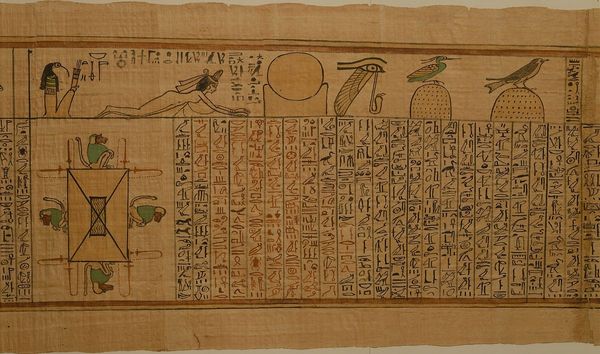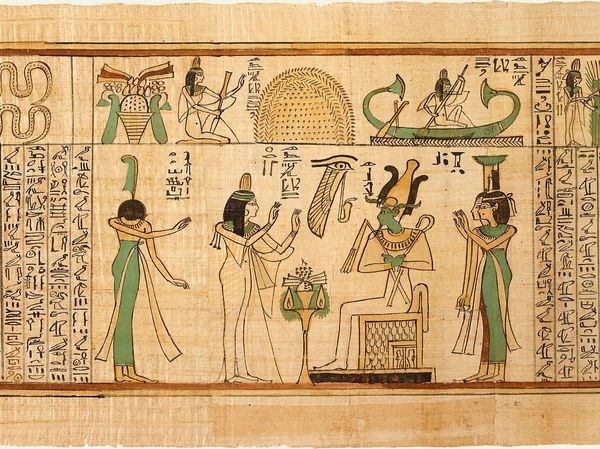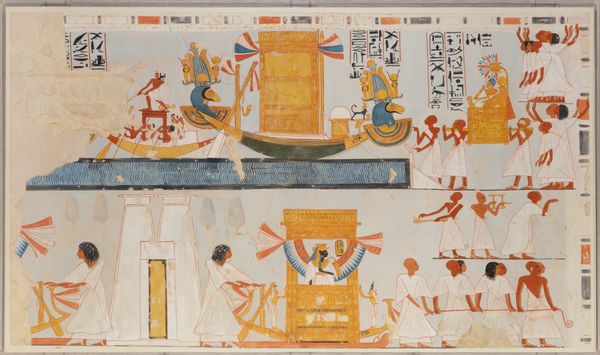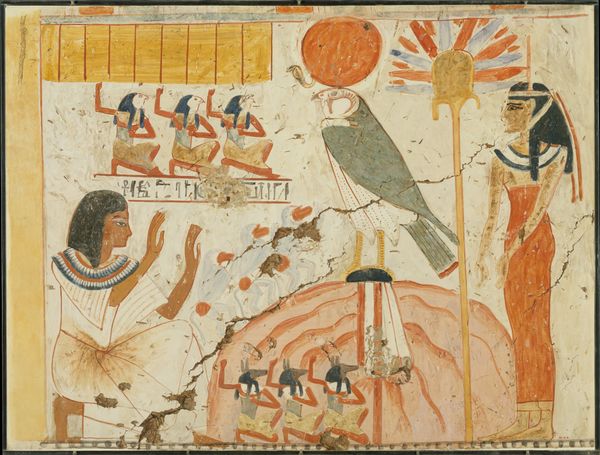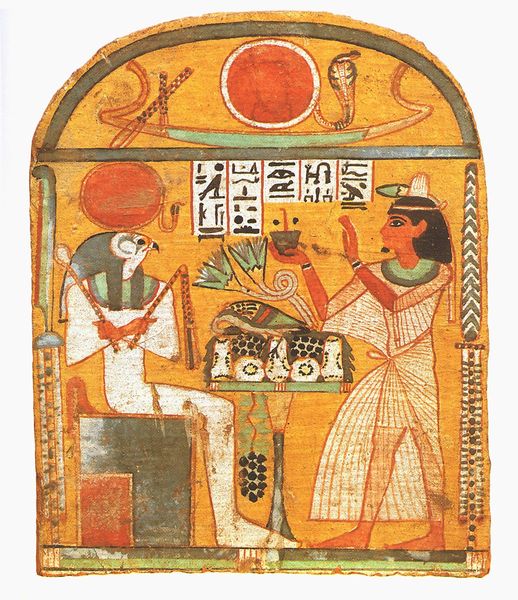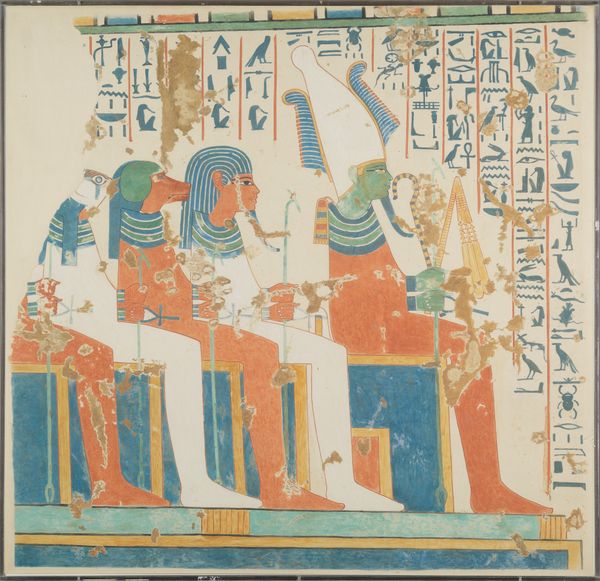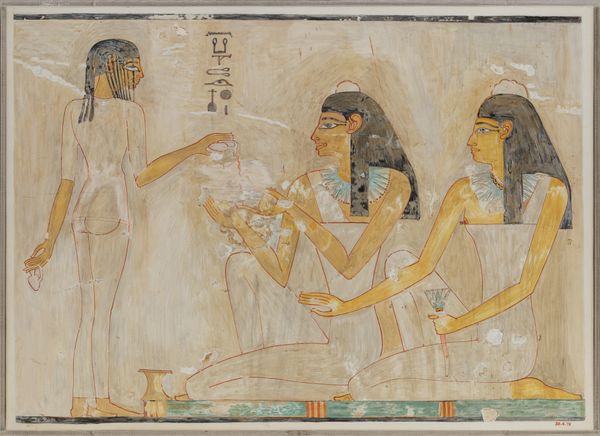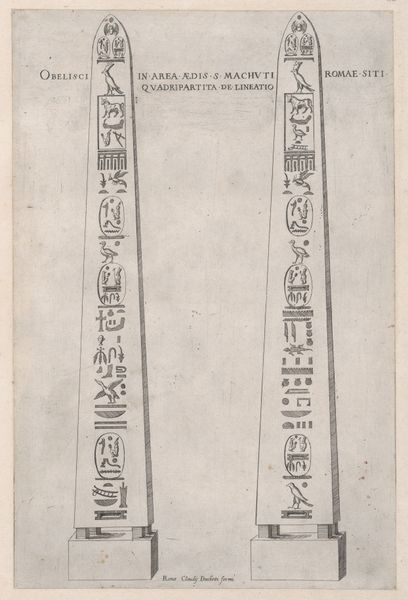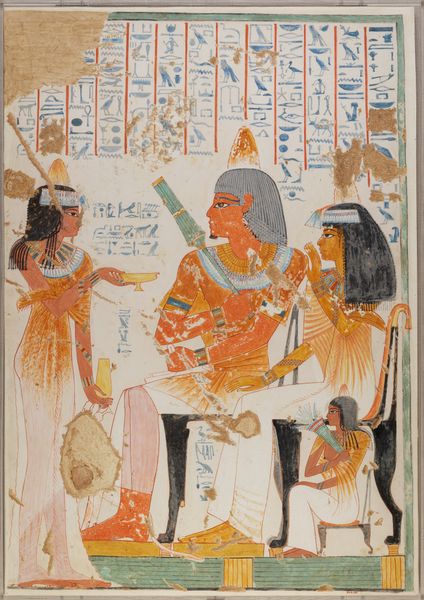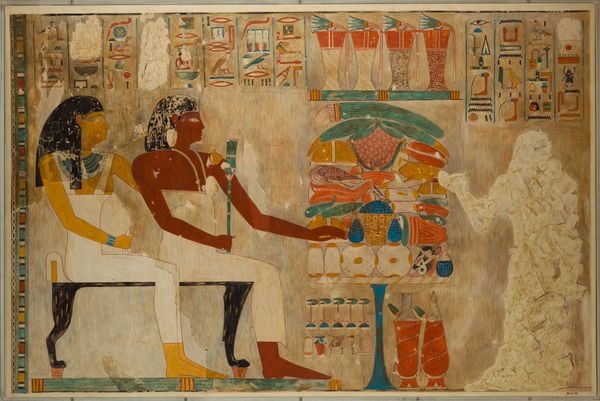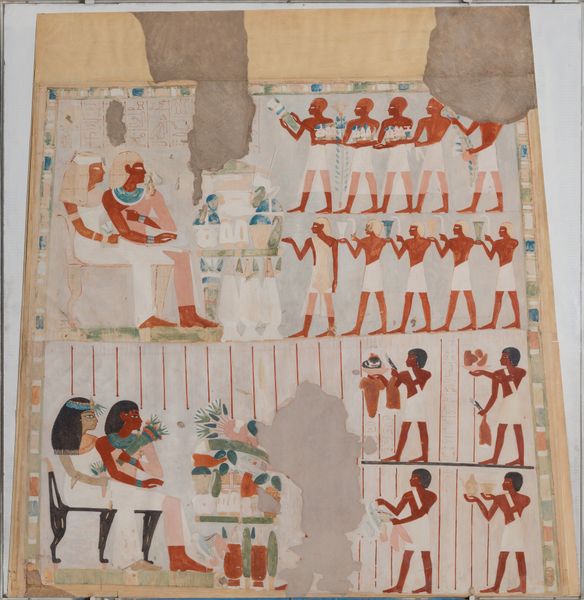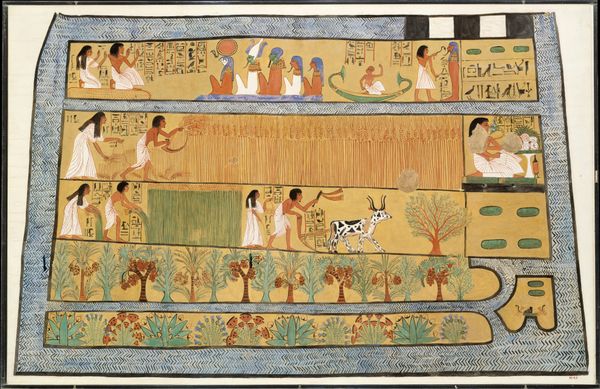
Nany Before Osiris, end (Book of the Dead for the Singer of Amun, Nany) 1050 BC
0:00
0:00
drawing, tempera, ink
#
drawing
#
narrative-art
#
tempera
#
ancient-egyptian-art
#
figuration
#
ink
#
geometric
#
ancient-mediterranean
#
history-painting
#
miniature
Copyright: Public domain
Editor: This is an image from the Book of the Dead for the Singer of Amun, Nany, dating back to 1050 BC. It looks like it's made of ink and tempera on papyrus, and depicts Nany before Osiris. It strikes me as quite serene and formal in its presentation. What do you see in this piece? Curator: Beyond the immediate representation of Nany before Osiris, consider the profound sociopolitical context. Nany, a female singer, held a privileged position in society. Her "Book of the Dead," an exclusive commodity, served as a roadmap for navigating the afterlife. The very existence of this personal scroll raises critical questions about social hierarchies and gender roles in ancient Egypt. Editor: So, it's not just a religious object, but a social statement too? Curator: Precisely! The elaborate imagery and text served to reinforce Nany’s status, even after death. Look at how she is depicted—her clothing, her posture, the offerings—everything signals her importance. Think about the power dynamics at play. Who commissioned this work? Who created it? Whose stories are being centered, and whose are being marginalized? Editor: That makes me look at the image in a completely different way, seeing it less as a straightforward religious scene and more as a constructed representation of power. Curator: Absolutely. Even the seemingly simple act of placing this scroll in her tomb became a form of performative identity, declaring her worthiness to the gods and to posterity. This object opens a portal for us to consider how class and gender shaped ancient Egyptian concepts of life, death, and legacy. Editor: Wow, I came expecting to talk about art history, and I’m leaving thinking about sociology, gender studies, and ancient politics! Thank you. Curator: The best art invites us to look at our present by studying the past.
Comments
No comments
Be the first to comment and join the conversation on the ultimate creative platform.
